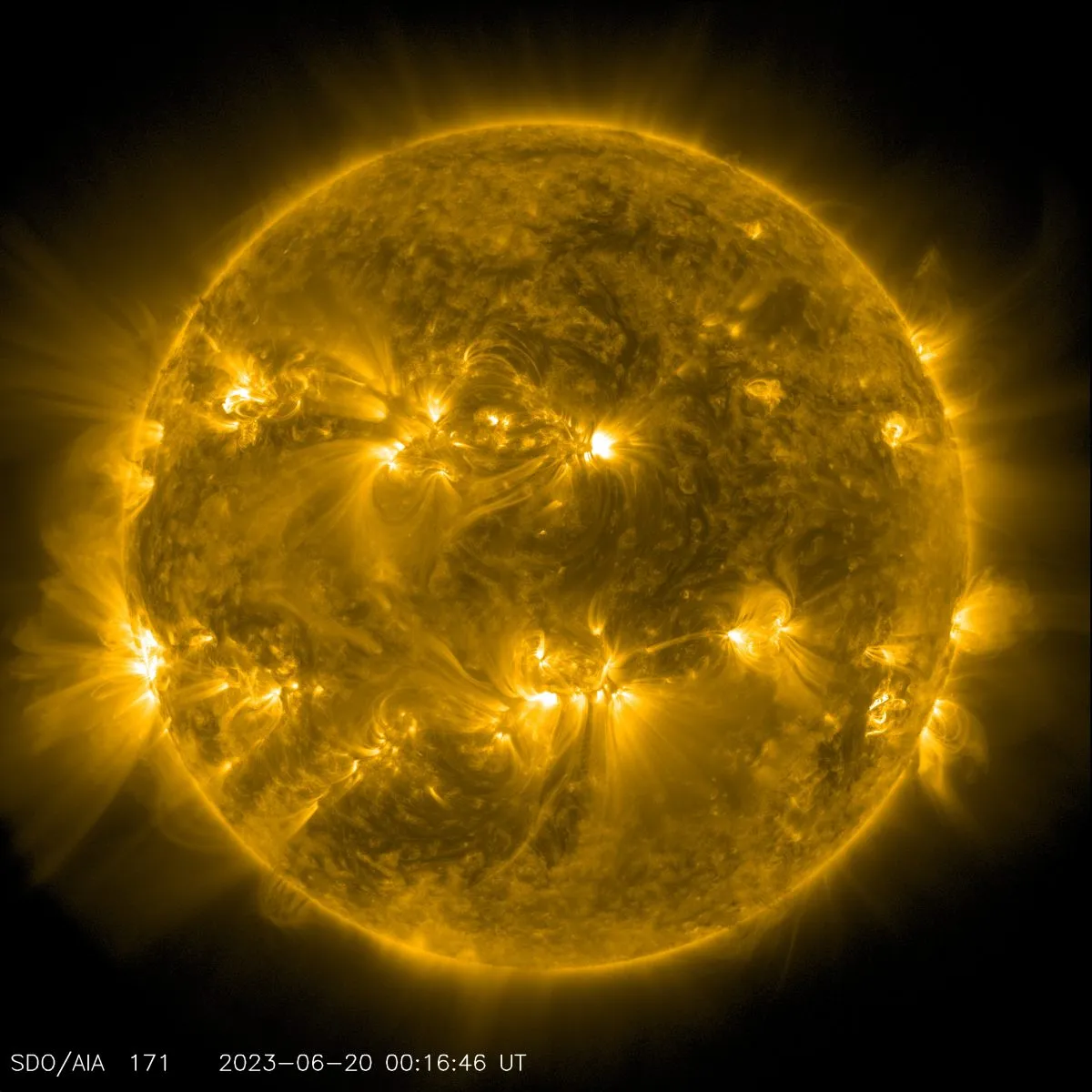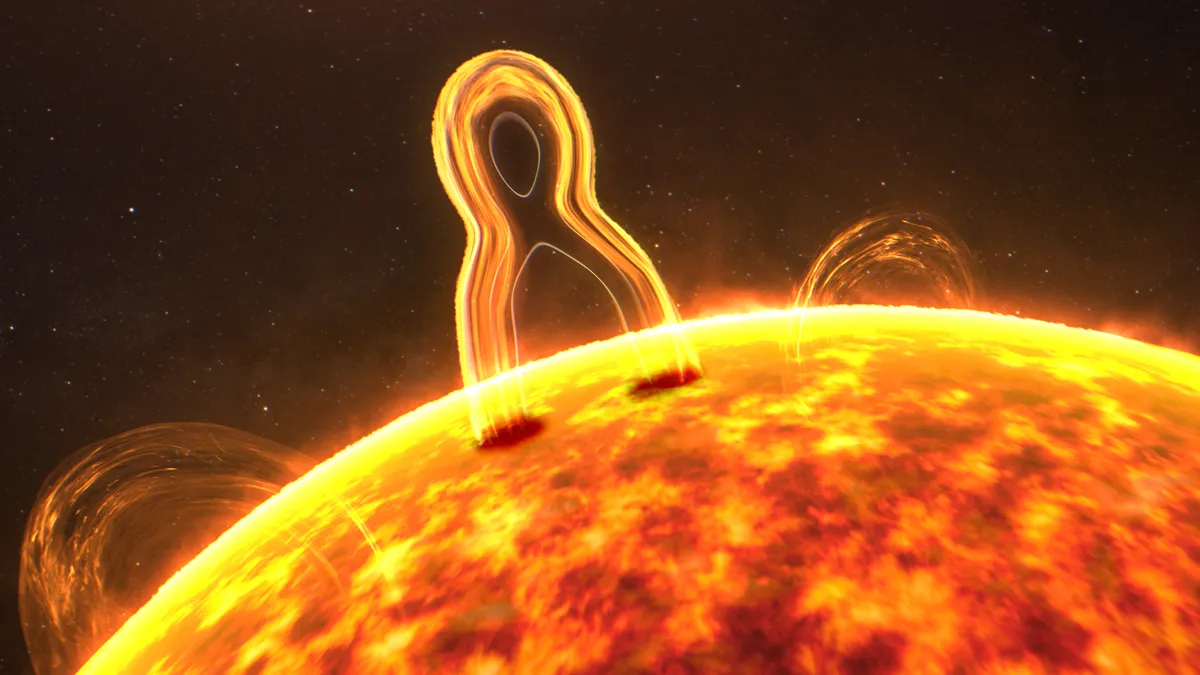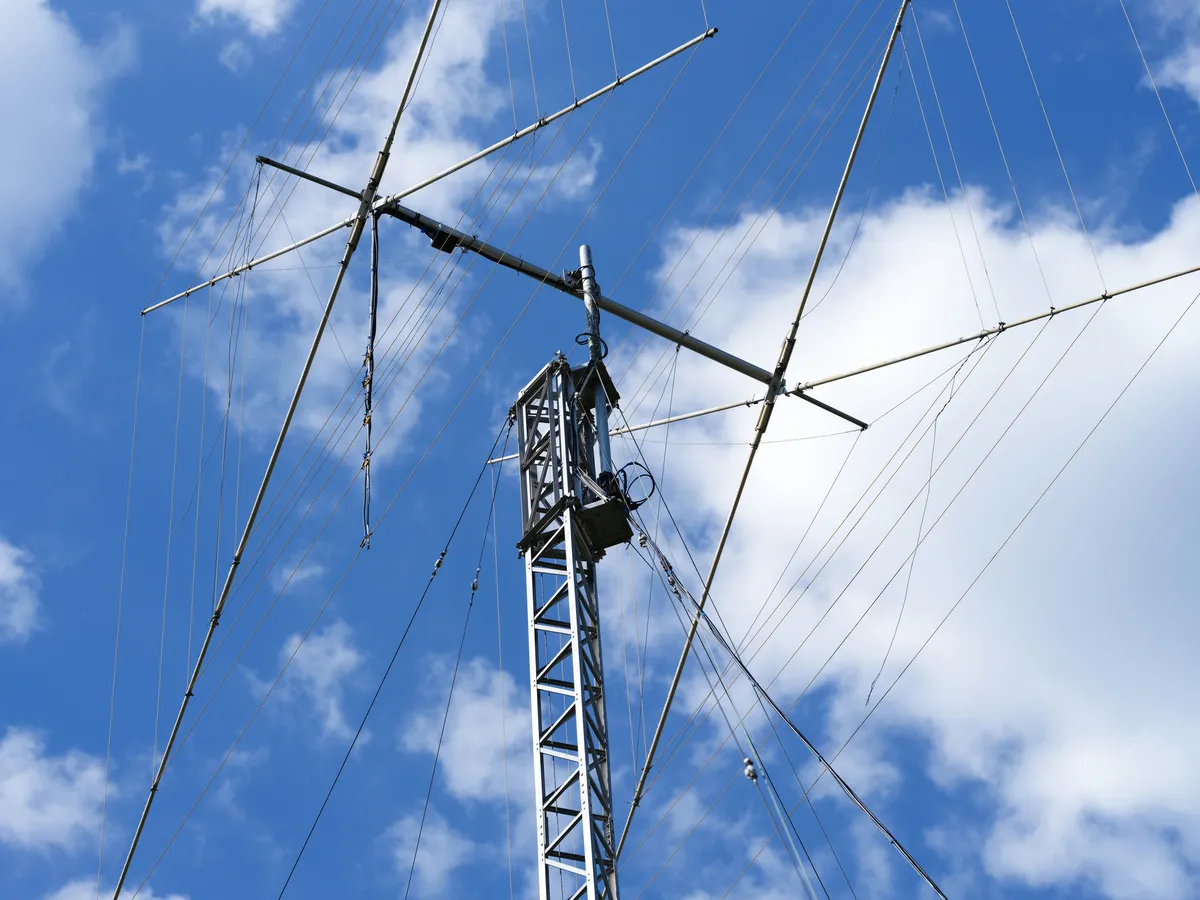A solar flare struck Earth on 20 June that was strong enough to knock out shortwave radio communications over North America for 45 minutes.
The flare originated from sunspot AR3341, which was seen erupting on 20 June 2023 by NASA's Solar Dynamics Observatory which constantly monitors the Sun’s activity.
The flare was an X-class flare – the strongest class of flare – which reached X1.1 at 17:09UT.
The SOHO spacecraft later detected a coronal mass ejection emerging from the eruption, travelling at 3.5 million km/h.
This relatively fast and would deliver a potent blow to anything it hits.
Fortunately, Earth should be well out of the firing line, though may experience a glancing blow on 22 or 23 June.
The flare is the most recent of several X-class flares which have erupted from the Sun as it is racing towards the peak of its 11-year solar cycle of rising and falling solar activity.

What is a solar flare?
Solar flares are localised eruptions from the Sun’s visible surface which fling electromagnetic radiation through space, some of which can hit Earth.
They are thought to be caused by tangles in the solar magnetic field accelerating charged particles in the Sun’s plasma.

They are often – but not always – accompanied by events sending out charged particles and other matter from the Sun such as coronal mass ejections, which can take several days to reach Earth.
Flares occur more frequently when the Sun is more active during the peak of its solar cycle.
Currently the Sun is in Solar Cycle 25 and is highly active as it is rapidly running up to solar maximum in late 2023 to mid 2024.
Are solar flares dangerous?
Solar flares emit a large amount of electromagnetic radiation, particularly X-ray and ultraviolet.
However this is almost completely absorbed by Earth’s atmosphere, meaning it poses no hazards to people on Earth. Even for astronauts above the atmosphere the radiation is not immediately dangerous, though extended exposure could be cause for concern.

However, the radiation can cause other issues, such as heating Earth’s outer atmosphere, causing it to expand which increases drag on low-Earth orbit satellites leading to orbital decay and interfering with radio communications causing blackouts.
One of the biggest problems is that as the radiation is electromagnetic it travels at the speed of light, so strikes Earth as the flare is first observed erupting, meaning there is little warning one is coming.
How do solar flares cause radio blackouts?
Flares cause increased levels of X-ray and extreme ultraviolet radiation.
When this arrives in the upper layers of the Earth’s atmosphere known as the ionosphere, it can knock an electron off of the atmospheric particles it strikes making them become charged, or ionised.
High frequency radio communications use ionosphere to bounce signals, allowing them to travel long distances where the curvature of the Earth would usually block the signal.

However, when the ionosphere is ionised, the signals don’t bounce as well, meaning they become degraded or get completely absorbed, resulting in a radio black out.
The most effected radio bands are the 3 to 30MHz bands, commonly referred to as the shortwave band. It is mainly used by international broadcasting stations, aviation communications, government time stations, weather stations and amateur radio.
